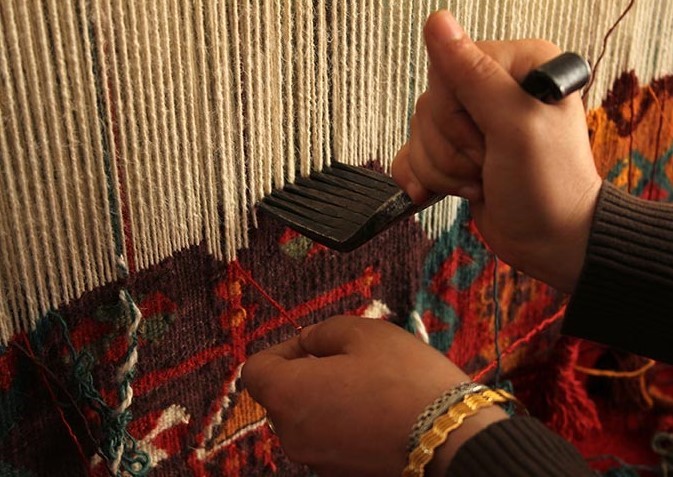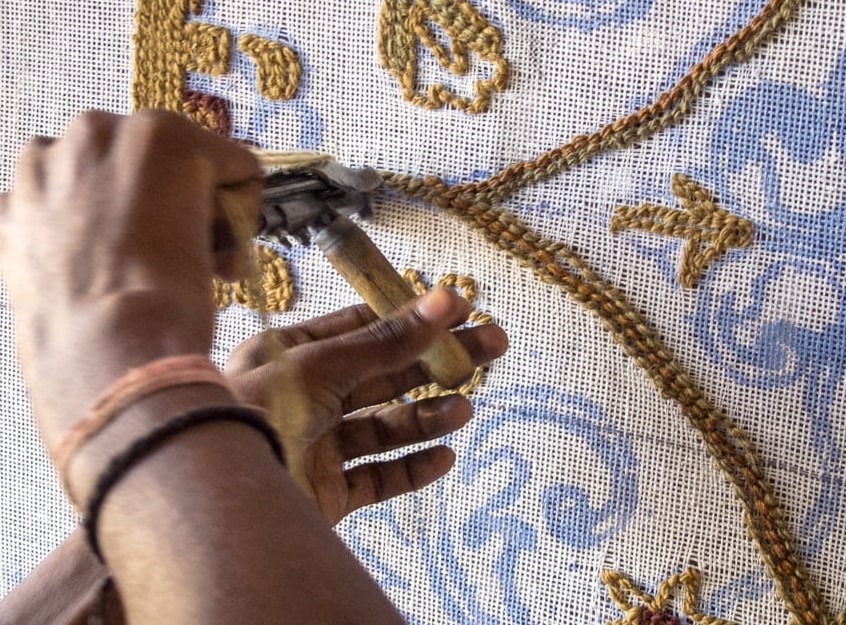Although both hand-woven and hand-tufted rugs are produced by hand, they use different weaving techniques, which affect the quality, texture, pattern intricacy, and price.
The goods or for example kafkazi handmade rugs have a distinct appearance and feel as a result of a completely new procedure. As a result of these factors, the longevity and price of these various types of carpets may vary. In this blog, we describe the intricate processes used to create these luxurious rugs.

How are Hand-Woven Rugs Made?
Hand-Woven rugs are woven on a loom rather than being constructed by millions of tiny knots, as their name implies. Because of the method used to manufacture them, the effects can be usually reversible, with the weft threads running left to right.
Many hand-woven rugs require a unique type of spinning for the woolens or threads used, and many also employ hand-dyed threads, which take a long time and require a lot of attention.
When you buy an original kafkazi handmade rug, you can be assured that it is hand-woven in the traditional manner.
It usually takes months of hard work to make a single handmade rug. The artisan begins by weaving a cotton thread into different patterns, which gradually progresses into the final product. The result is difficult to produce and requires professional skill, equipment, and time.
Because they're flat, hand-woven carpets are sometimes referred to as "flat weaves." They're weaved more like baskets, so the front and back of the rug are identical, making it reversible. They don't have a pile or any "knots."
Adding more knots to rugs can give them more texture which is the look you want. It strengthens the fibers, makes them more durable, and creates a neat look that highlights their beauty. Some larger rugs are made by two or three people working together for weeks at a time, depending on the weight and size of the rug.
What Distinguishes Hand-Woven Rugs?
You can tell a lot of time and effort has gone into the weaving process of hand-woven rugs just by looking at them. Each round can take up to four months, but when you think about the long-term economic value they provide, it's worth it!
The design of the rug is woven with a pattern that’s called the web. The web involves the use of knots, which are made by taking one thread from the woof and leaving it on top of the filling thread.
A couple more threads would come afterward, followed by three or more threads coming down during one single knot. Hand-woven rugs or specifically Kafkazi rugs often have an asymmetrical design and a unique character, which is caused by varying the color and density of the wool thread.
Designers often use specific items and icons that are associated with a particular theme. These can be flowers, trees, fruits, vegetables, or geometric patterns.
How are Hand-Tufted Rugs Made?

A hand-tufted rug is created in part by hand and in part by a machine. Wool is used to make this sort of rug. The rug is created by punching wool strands into a canvas that is stretched on a frame using hand-operated equipment. This procedure takes less time and does not necessitate the same level of ability as hand-weaving.
The rug is removed from the frame after being piled with wool. To keep the tufts in place, a hand-tufted rug will have some form of backing. A scrim fabric is frequently attached to the back. A fringe is added to the rugby either stitching or gluing it on.
Thousands or millions of knots are painstakingly tied to a foundation. After the knotting is accomplished, the rugs are "raw" and must be shaved down to achieve this polished, intricate look.
What Makes Hand-Tufted Rugs Unique?
Hand-tufted carpets are quite similar to hand-woven rugs in terms of materials. Wool and cotton are the most common fabrics for hand-tufting, and they're typically used together. The softness of the surface is what distinguishes this style of carpet. Although the pile of hand-tufted rugs is not as dense as that of hand-woven rugs, it is dense enough to provide a soft fiber cushion that is just delightful to touch.
These rugs are stunning to look at. They can be decorated in a variety of styles, ranging from traditional Oriental patterns to modern Art Deco or Scandinavian themes. Hand-tufted carpets have a somewhat shorter lifespan than other weave varieties. They can, however, live for a decade or even longer if properly cared for. Furthermore, their limited longevity isn't always a bad thing because it allows the owner to replace the carpet as often as desired.
Key Differences Between Hand-Woven & Hand-Tufted
|
Hand-Woven
|
Hand-Tufted
|
Which One Should You Opt For?
It depends on you but in our opinion go for hand-tufted. The hand-tufted rugs are an excellent replacement for hand-woven carpets, you can find handmade kafkazi rugs online. They will be a wonderful alternative for people who wish to follow trends or just like frequent changes because they are equally gorgeous but less expensive.
A hand-knotted carpet will operate better in places with a lot of movement and traffic than a hand-tufted carpet. A hand-tufted rug, on the other hand, will fit you better if you need a rapid turnaround and are decorating on a budget. Tufted carpets may be replaced more quickly, and they frequently have more unusual designs.
Rugs are excellent area definers that provide warmth, order, and color to any room. They offer relaxing environments where individuals may spend time with their family and friends while forgetting about the stresses of everyday life. Rugs are an important aspect of current design trends. A living room without a rug is, without a doubt, just a room.













